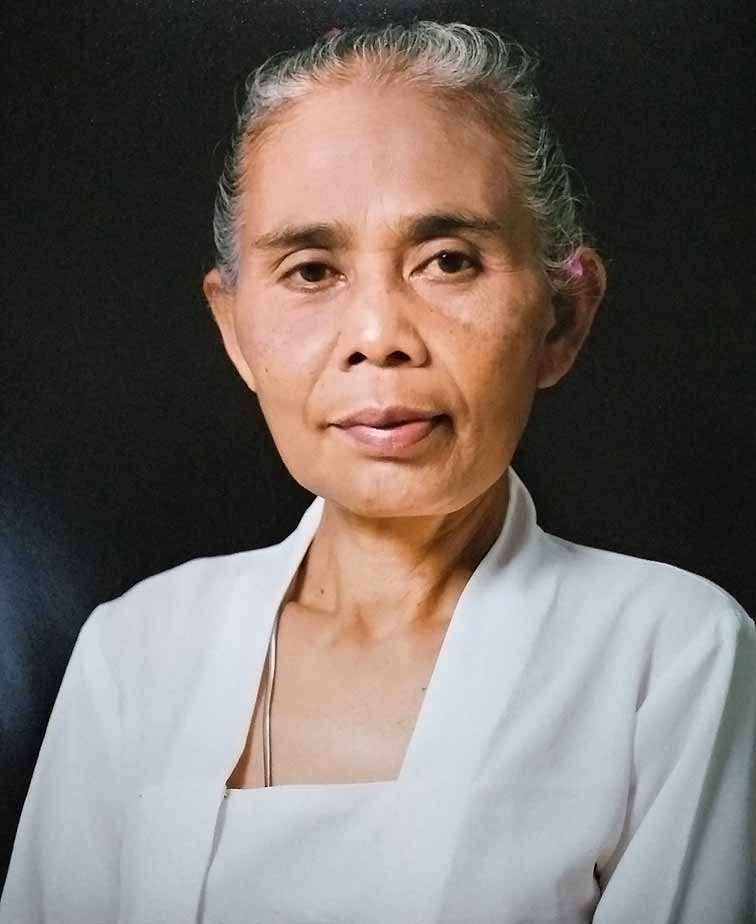
Mangku Muriati (b. Kamasan, Bali, Indonesia) is a Balinese priestess from the ancient village of Kamasan, known for its painting tradition. In addition to traditional training from her father, the legendary painter Mangku Mura (1920-1999), she received academic training in art at the Udayana University, Bali. Mangku Muriati is participating in Sharjah Biennale 2025 in UAE with her paintings this year. Muriati paints in traditional Balinese form, known as Kamasan-style, where aesthetic form and narration relate to the Wayang Kulit puppet theatre. This form of painting is associated with the East Javanese kingdom of Majapahit, which flourished in the 14th and 15th centuries and helped propagating Hindu faith across the region – now largely retained in Bali. It was Kamasan village, where artists were traditionally recruited to produce classical-style paintings on cloth or bark for religious and ceremonial use and to decorate the palaces and temples. Mangku Muriati’s father, Mangku Mura, is considered one of the prominent artists of his generation in Kamasan-style painting. As is common practice in artist families, Muriati used to help her father in colouring paintings from an early age, learning the craft of painting. She studied art at the Udayana University in Denpasar, Bali, and after graduating, returned to the traditional style of painting. In the 1990s, at the age of 32, Muriati was ordained priestess at her local temple in the ward of Banjar Siku. She considers painting and priestly duties as complementary, comparing the role of an artist to a dalang or puppet master, who needs extensive knowledge of characters and stories, ultimately derived from what is considered the sacred scripture: the Hindu epics Ramayana and Mahabharata. The subjects of her paintings and related commentaries frequently refer to social and political issues in contemporary Bali, such as recently the Covid-19 pandemic or portraits of colleagues and herself. In 2023 in collaboration with HFA and Biasa Art, V-Room presented Mangku Muriati’s solo exhibition Year of the Tiger in Ubud, Bali. Muriati’s paintings have been exhibited and collected in Bali as well as internationally.
